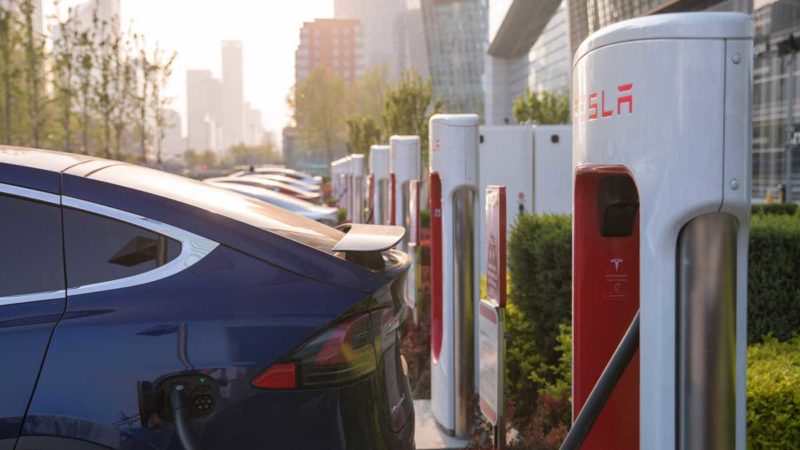Tesla boss Elon Musk says the EV maker’s Supercharger V3 network will be increased from its current 250kW max output to 300kW.
The comments were made by Musk in response to a tweet about the results of Car and Driver’s 1,000-mile (1,600km) EV distance driving face-off in which 11 vehicles were charged with completing a 1,000-mile journey.
Of the 11, which also included a Ford Mustang Mach-E, a Porsche Taycan 4S, a Kia Niro EV, a Audi e-tron, a Volkswagen ID.4, a Volvo XC40 Recharge, Polestar 2 and a Nissan Leaf Plus, it was three Tesla electric cars that topped the list – a Model S Long Range Plus introduced in June 2020, a Model 3 Performance, and a Model Y Performance.
While Musk pointed out that the Model 3 Long Range and Model Y Long Range should have been used in the test instead of the Performance variations because they are designed for maximum range as opposed to better acceleration and power, he also noted that the new Tesla Model S Long Range, which has more range and faster-charging capabilities, would have fared even better.
Musk then revealed the new upgrade details, noting that upgrading Tesla Supercharger Network to 300kW would further improve Tesla’s results in range tests such as these.
Not bad, although new Model S has more range & faster charging. 3 & Y should use long range version, as Performance version is meant for max speed & handling, not max range.
Supercharger network is being upgraded to 250kW to 300kW, so that will help too.
— Elon Musk (@elonmusk) July 15, 2021
While the Tesla Supercharger V3 was introduced in March 2019 in the US, the EV maker has only recently commenced installation of V3 units in Australia, with the first such charger opening in Tasmania in May.
As Tesla typically rolls out upgrades first in the US, it is unclear if the new Australian chargers will be able to reach this top rate. When first introduced in 2019 the V3 consisted of a 1MW power cabinet with peak charging rates of up to 250kW per car. Musk gave no timeline for the upgrade to 300kW.
As noted previously by The Driven, Tesla vehicles have the charging advantage over other electric cars because they can charge at both Tesla chargers and those operated by third parties if they have the CCS2 plug (all new vehicles have this, and owners of older models can optionally upgrade for a fee).
More crucially, Supercharger V3 stations do not share power with surrounding vehicles, allowing each network user to charge at the maximum capacity of their battery.
When V3 was first unleashed in 2019 Tesla stated in a blog post that the upgrade from 120kW to 250kW would mean Tesla owners would spend 50% less time if charging only from its network if using the pre-charging battery conditioning feature on route to the charger, activated by plugging the Supercharger location into the navigation.
It anticipated the average amount of time spent at a charger by a Tesla owner would be around 15 minutes. Upgrading to 300kW will reduce this average time even further.
It is worth noting that third-party operators such as Chargefox and Evie Networks in Australia already operate 350kW chargers, although whether the full charging capacity can be utilised by any particular vehicle depends on the maximum charge rate of the vehicle itself.

Bridie Schmidt is associate editor for The Driven, sister site of Renew Economy. She has been writing about electric vehicles since 2018, and has a keen interest in the role that zero-emissions transport has to play in sustainability. She has participated in podcasts such as Download This Show with Marc Fennell and Shirtloads of Science with Karl Kruszelnicki and is co-organiser of the Northern Rivers Electric Vehicle Forum. Bridie also owns a Tesla Model Y and has it available for hire on evee.com.au.

